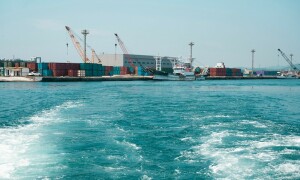It appears that the fate of the cement industry is no longer tied to how strongly the companies perform on volumes. In fact, the financial performance of cement companies belies the weak recovery in the industrial sector—with LSM growth recording negative growth in 1QFY25, that too from a low base. In this period, cement dispatches dropped 14 percent whereas domestic demand actually plummeted 20 percent! But unperturbed by dull demand, the 10 million tons of cement sold translated to a combined earnings growth of 13 percent for the 16 companies under consideration.
Exports have contributed to their fair share—now holding 21 percent of the pie compared to last year’s 15 percent. But it isn’t just exports. Sustained domestic pricing helped. By our estimates, revenue per ton sold grew 12 percent for the companies which is higher than the increase in costs per ton sold (8%). Increased coal costs may have dampened the strong price effect, but did not entirely dilute it. As a result, margins improve in 1QFY25—a combined 30 percent from 1QFY24’s 28 percent—moving an inch or two closer to the industry’s high-margin glory days.
What else helped, one might ask? Declining interest rates have brought down the combined finance costs by 17 percent year on year, and down to 5 percent of revenue in 1qFY25 compared to last year’s 6 percent. Though overheads are up, likely due to higher distribution costs owing to exports, companies have also earned a reasonable level of ‘other income’ to cover a portion of these expenses. In 1QFY25, other income combined was 5 percent of revenue and 21 percent of before-tax earnings, buttressing the bottom line far more than the same period last year (17% of BT earnings).
Market expectations were markedly lower than the actual financial performance of cement companies which indicates how well the industry fares in times of economic instability. On the subject of demand, however, the domestic outlook has not improved over the past few quarters. Despite a dramatic and encouraging growth in exports, domestic demand is marred by higher construction costs, which only go up when taxes such as FED are raised. Erosion of purchasing power is visible in the inactivity across the real estate sector. In the infrastructure and development domain though, cement will continue to find steady improvement as projects get revived and re-approved. The industry will rely on that, on exports persevering and the hope that demand will resurface as inflationary pressures subside. Until then, they have pricing power to keep them in the game.























Comments